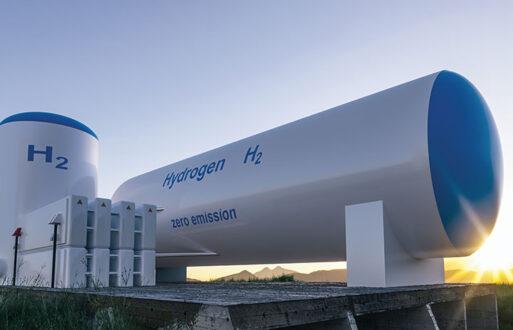Disclaimer: This blog post, which answers “How do seasonal vs. annual resource adequacy hours impact MISO’s Schedule 53 resource accreditation?,” was generated using PCI’s ISO/RTO Documentation AI Chatbot, powered by ChatGPT. While the content is based on curated market documentation, it is intended for informational purposes only and may not reflect the most up-to-date or comprehensive information. We recommend verifying any key details directly with relevant sources before making business decisions.
For the latest answer to this question, generated live, visit our free ISO/RTO Documentation Chatbot.
MISO’s transition to seasonal resource accreditation is reshaping how resources are evaluated and accredited under Schedule 53. This shift from annual to seasonal resource adequacy hours is designed to better align resource performance with the grid’s needs during critical periods. But what does this mean for different resource types like thermal, renewables, and storage? And how does it affect capacity obligations and the outcomes of the Planning Resource Auction (PRA)?
In this blog post, we’ll explore how MISO’s seasonal approach impacts Schedule 53 calculations, the evaluation of various resource types, and the broader implications for market participants. By the end, you’ll have a clear understanding of how these changes influence resource accreditation and capacity planning in MISO.
ISO/RTO Documentation Chatbot
Use our AI to search Business Practice Manuals from ISO/RTO markets at no cost.
Why MISO is transitioning to seasonal resource accreditation
MISO’s move to seasonal resource accreditation stems from the need to address the grid’s evolving reliability challenges. Historically, resource adequacy hours were calculated on an annual basis, focusing on periods of highest demand across the year. However, this approach didn’t fully account for seasonal variations in resource availability and grid stress.
For example, renewable resources like wind and solar often perform differently across seasons, with wind generation peaking in winter and solar in summer. Similarly, thermal resources may face seasonal maintenance schedules or weather-related limitations. By transitioning to seasonal accreditation, MISO aims to ensure that resources are evaluated based on their performance during the most critical hours of each season, rather than an annual average.
How seasonal resource adequacy hours affect Schedule 53 calculations
Under MISO’s Schedule 53, Seasonal Accredited Capacity (SAC) is calculated for each resource type based on its performance during Resource Adequacy (RA) Hours. These RA Hours represent the periods of highest risk and greatest need within each season.
Key changes with seasonal accreditation:
- Annual vs. seasonal focus: Previously, MISO targeted 260 annual RA Hours, but now these hours are distributed across seasons, ensuring a more granular evaluation of resource performance.
- Resource-specific performance: Resources are accredited based on their historical performance during critical seasonal hours. For instance, thermal resources are evaluated using forced outage rates, while wind and solar resources rely on Effective Load Carrying Capability (ELCC) studies.
- New resources: For resources without sufficient historical data, MISO applies class averages or other proxy metrics until enough performance data is available.
This seasonal approach ensures that resources are accredited based on their actual contribution to reliability during the times they’re most needed, rather than relying on annual averages that may not reflect seasonal variations.
How different resource types are evaluated under Schedule 53
MISO’s Schedule 53 uses tailored methodologies to evaluate different resource types, reflecting their unique characteristics and contributions to grid reliability.
Thermal resources:
Thermal generation resources are accredited based on their Installed Capacity (ICAP) values, adjusted for seasonal forced outage rates. This ensures that their accreditation reflects their availability during critical seasonal hours.
Renewable resources:
Wind and solar resources are evaluated using ELCC studies, which assess their ability to reliably contribute to the grid during peak seasonal hours. These studies account for factors like weather patterns and historical output data.
Energy storage resources:
Storage resources are accredited based on their ability to discharge energy during critical hours. This includes evaluating their duration, state of charge, and historical performance during RA Hours.
By tailoring accreditation methodologies to each resource type, MISO ensures that the SAC values assigned under Schedule 53 accurately reflect each resource’s reliability contribution.
Impacts on capacity obligations and PRA outcomes
The shift to seasonal accreditation has significant implications for capacity obligations and the Planning Resource Auction (PRA).
Capacity obligations:
Load-serving entities (LSEs) must now meet seasonal capacity obligations, which are based on the SAC values of their resources. This seasonal approach ensures that LSEs procure sufficient capacity to meet reliability needs during each season, rather than relying on annual averages that may not align with seasonal demand patterns.
PRA outcomes:
The PRA, which determines the clearing prices for capacity, is also affected by seasonal accreditation. Resources with higher SAC values during critical seasonal hours are likely to command higher prices, reflecting their increased reliability contribution. Conversely, resources with lower seasonal performance may see reduced accreditation and lower market value. This dynamic incentivizes resource owners to optimize their performance during critical seasonal periods to maximize their accreditation and market revenues.
What this means for market participants
MISO’s transition to seasonal resource accreditation under Schedule 53 represents a significant shift in how resources are evaluated and valued. For market participants, this means adapting to new methodologies and aligning their operations with seasonal performance expectations.
Thermal, renewable, and storage resources must all demonstrate their reliability during critical seasonal hours to maximize their accreditation and market value. Meanwhile, LSEs must navigate the complexities of seasonal capacity obligations and PRA dynamics to ensure they meet their reliability requirements cost-effectively.
By understanding these changes and their implications, market participants can position themselves to succeed in MISO’s evolving resource adequacy framework.
For the latest answer to this question, generated live, visit our free ISO/RTO Documentation Chatbot.







